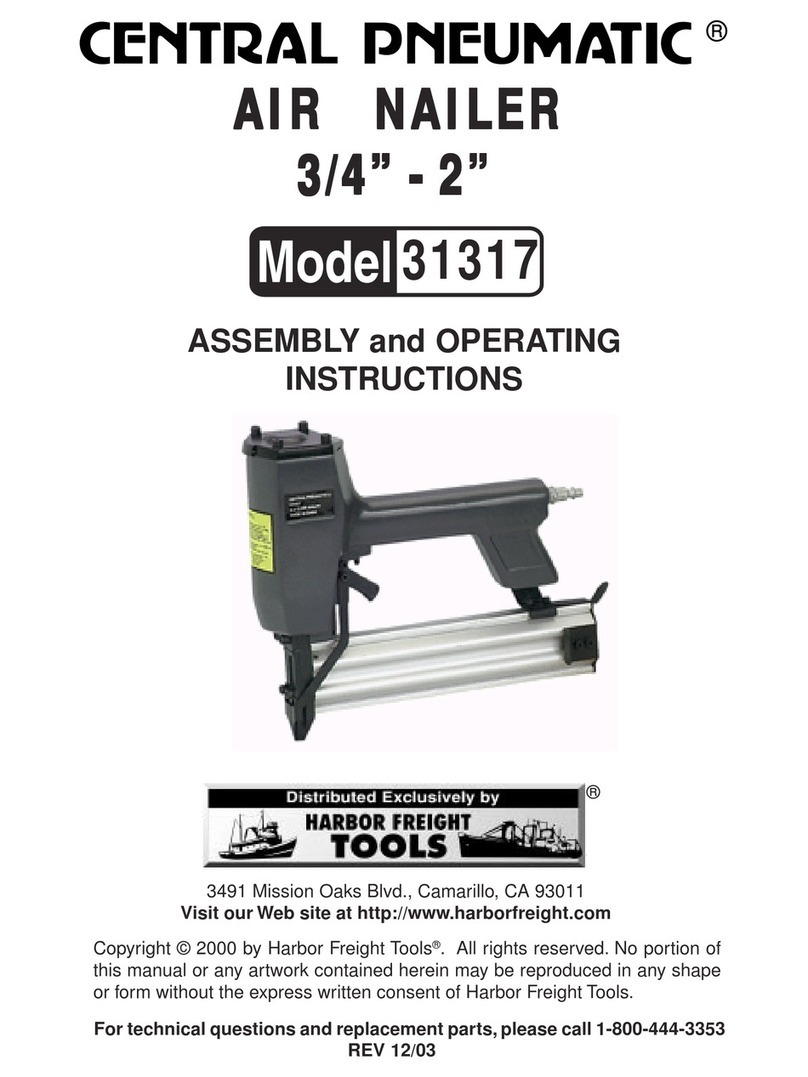
SKU 93241 For technical questions, please call 1-800-444-3353. Page 6
7. Do not overreach. Keep proper footing and balance at all times. Do not reach
over or across running machines or air hoses.
8. Use eye and ear protection. Always wear ANSI approved impact safety
goggles and appropriate hearing protection. Wear a full face shield if you
are producing metal filings or wood chips. Wear an ANSI approved dust
mask or respirator when working around metal, wood, and chemical dusts
and mists. Other people in the work area must also wear ANSI approved
impact safety goggles at all times.
9. Maintain tools with care. Keep tools clean for better and safer performance.
Follow instructions for lubricating and changing accessories. Inspect tool cords
and air hoses periodically and, if damaged, have them repaired by an authorized
technician. The handle must be kept clean, dry, and free from oil and grease at
all times. Do not operate a tool if any portion of the tool’s operating controls are
inoperable, disconnected, altered, or not working properly.
10. Disconnect the Battery when not in use. Never service the Nailer/Stapler,
clear jams, load nails/staples, or disassemble with the Battery attached.
11. Remove adjusting wrenches. Check that adjusting wrenches are removed
from the tool or machine work surface before attaching to an air source.
12. Avoid unintentional starting. Be sure the Trigger is in the OFF position when
not in use and before attaching the Battery. Do not carry any tool with your
finger on the Trigger, whether it is attached to the Battery or not. Do not point
the tool towards yourself or anyone whether it contains nails/staples or not.
13. Stay alert. Watch what you are doing. Use common sense. Do not operate any
tool when you are tired.
14. Check for damaged parts. Before using any tool, any part that appears
damaged should be carefully checked to determine that it will operate properly
and perform its intended function. Check for alignment and binding of moving
parts, any broken parts or mounting fixtures, and any other condition that may
affect proper operation. Any part that is damaged should be properly repaired or
replaced by a qualified technician. Do not use the tool if the Trigger does not
operate properly.
15. Guard against electric shock. Prevent body contact with grounded surfaces
such as pipes, radiators, ranges, and refrigerator enclosures.
16. Replacement parts and accessories. This product is to be repaired and
serviced only by a qualified technician. When this product is serviced, only
identical replacement parts should be used. Use of any other parts will void the
warranty.







































